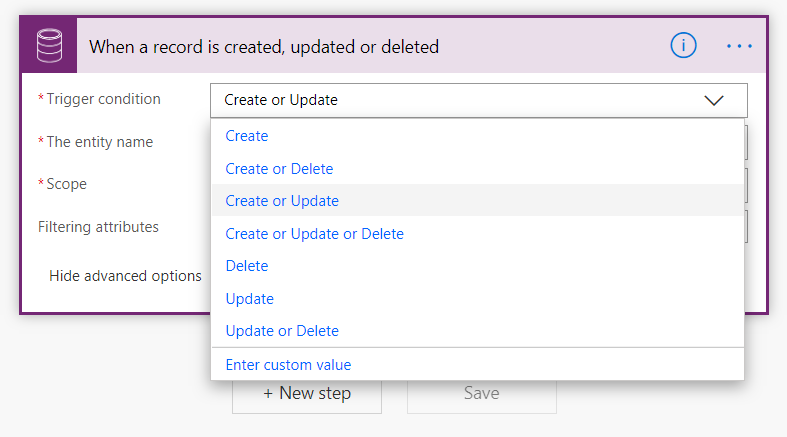Improvements to automated flow parity with classic Common Data Service workflows
Important
This content is archived and is not being updated. For the latest documentation, see Microsoft Dynamics 365 product documentation. For the latest release plans, see Dynamics 365 and Microsoft Power Platform release plans.
Over time, automated flows will replace the existing classic Common Data Service workflows (formerly known as Dynamics 365 for Customer Engagement workflow). With this release, it's now possible to use automated flows to accomplish most scenarios that asynchronous classic Common Data Service workflows supported. Several capabilities, including action support, are covered elsewhere in the release notes.
- Filter triggers based on which attributes change - You can control which field changes trigger your automated flows. For example, trigger your flow only when the status field changes while ignoring all other fields that may change.
- Support for multiple trigger events - Previously, you could only trigger on one event (for example: Create, or, Delete). Now, you can choose different permutations of events, such as Update or Delete or Create or Update or Delete.

We're also providing migration guidance, although there is no automatic migration at this time.
Below is a list of the remaining features in automated flows that are not yet available but will be in the subsequent release wave:
- Triggers based on certain attribute values: For example, trigger only based on records in a certain state. By including triggers in the middle of flows, you can leverage them as Wait conditions inside of a flow.
- Call other flows: Flows can now call other flows and pass parameters to them.
- Run As capabilities: Automated flows that are triggered by Common Data Service can run with either an account defined by the owner of the flow or with the identity of the user who performed the change that caused the trigger.
- Resume flows from a failed action: If a flow fails on an action, makers can resume the flow from that action after they’ve repaired the error.
- Support for on-demand and event triggers in one flow: Flows can now simultaneously be automated (triggered by events in the system) and instant (triggered on-demand).